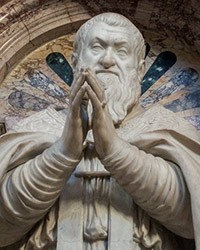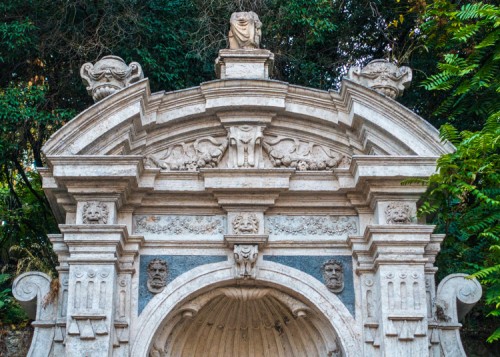
Fontana del Prigione of Janiculum Hill (Gianicolo), fragment
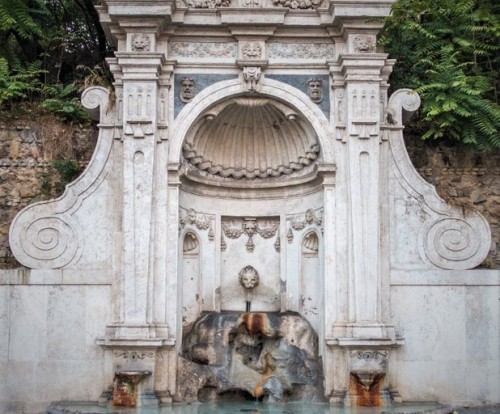
Fontana del Prigione,fragment, Gianicolo
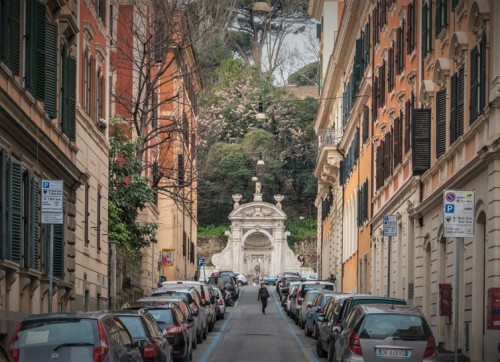
Fontana del Prigione of Janiculum Hill
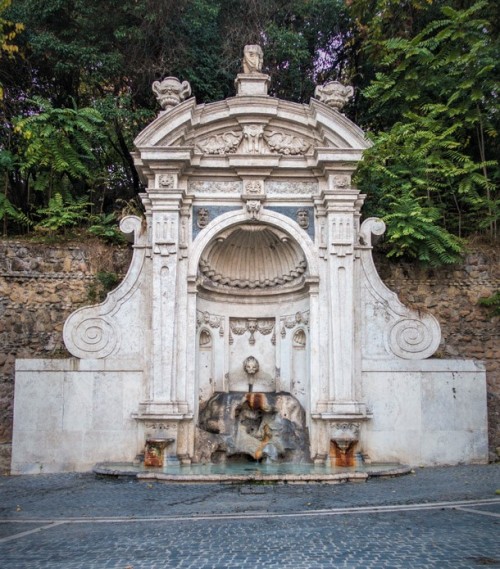
Fontana del Prigione, Gianicolo
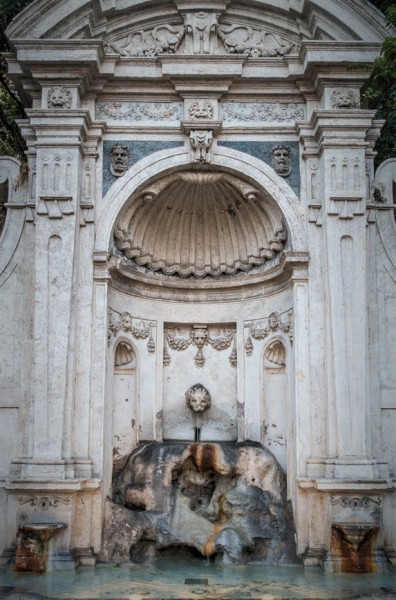
Fontana del Prigione, fragment
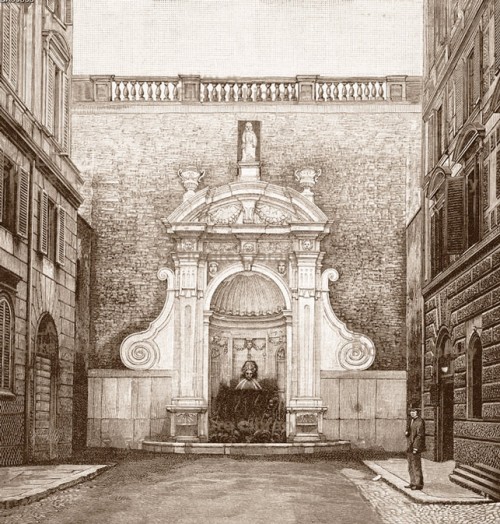
Fountain on Quirinale
This fountain, possessing a rather unusual name (the prison fountain) is presently located at the foot of Janiculum Hill (Gianicolo) at via Goffredo Mameli. Its exquisite beauty is generally discovered by accident, climbing the hill or suddenly stopping at the vi Luciano Manara, in order to feast our eyes upon the perspective, which it finishes off. The fountain, as was the case with other ones, traveled a long way, to find itself in the place where it stands today.
This fountain, possessing a rather unusual name (the prison fountain) is presently located at the foot of Janiculum Hill (Gianicolo) at via Goffredo Mameli. Its exquisite beauty is generally discovered by accident, climbing the hill or suddenly stopping at the vi Luciano Manara, in order to feast our eyes upon the perspective, which it finishes off. The fountain, as was the case with other ones, traveled a long way, to find itself in the place where it stands today.
Originally, meaning at the end of the XVI century, it was created by a trusted papal architect Domenico Fontana for a completely different spot – the imposing Montalto Peretti urban villa belonging to Pope Sixtus V. This residence, today no longer existing, was in the past located on Esquiline Hill, near the Basilica of Santa Maria Maggiore, and with a surface area of six square kilometers, was at that time one of the largest recreational and representative structures of this type within the walls of Rome.
However, where does its name come from? It stems from the unpreserved, but in the past found in the main niche figure of a prisoner with his hands bound. Most likely it was a reference to Slaves by Michelangelo from the unfinished funerary monument of Julius II, which was to be placed in the Basilica of San Pietro in Vincoli. In this case the sculpture was to symbolize the liberation from earthly chains. The statue was visible above a mascaron, from whose maw water spouted. However, in the past it flowed into an ancient (most likely) sarcophagus, which was quite typical for Roman fountains. Unfortunately, through the tumultuous times these elements were lost. The niche remained empty, while the mascaron was replaced with a lion’s head and the sarcophagus with a kind of rocky cascade. At the end of the XIX century, when Rome was experiencing a construction boom, the villa of Pope Sixtus V, was parceled out and built over with numerous structures, including the complex of the Termini Railway Station and residential buildings. The fountain located in the park was bought by the municipality of Rome in 1888 and was placed at via Venezia, then at via del Quirinale, to then once again be moved to the via Genova. However, it did not remain there for a long time, since due to the construction in the 1920s, of the building of the Ministry of Internal Affairs, it was once again moved – this time to its present-day location.
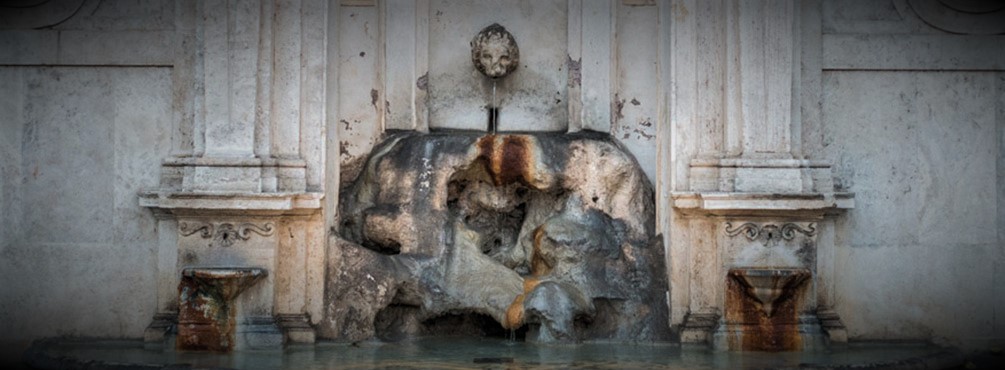
At that time, the fountain was reconstructed, so that it would resemble the original one as much as possible. Besides the lost prisoner (slave) the two sculptures flanking it representing Apollo and Venus were also not recovered, as was the case with the statue of Jupiter which in the past topped off the fountain. It was replaced by a statue of the god of medicine Asclepius, which however lost its head due to a theft. And while the fountain is bereft of many of its original elements, it constitutes an excellent example of early-Baroque work of garden art. Richly decorated with the heads of lions (a reference to the papal coat of arms), with flower garlands, pilasters, fleurons, and volutes, it transports us to the distant times of the end of the XVI century. Stopping in front of it, we can imagine the rustle of water, disturbing the ideal silence of the enormous papal garden, full of greenery and the delicate chirping of birds.
In recent years the fountain has been thoroughly renovated and today it appears to us in all of its splendor.





















